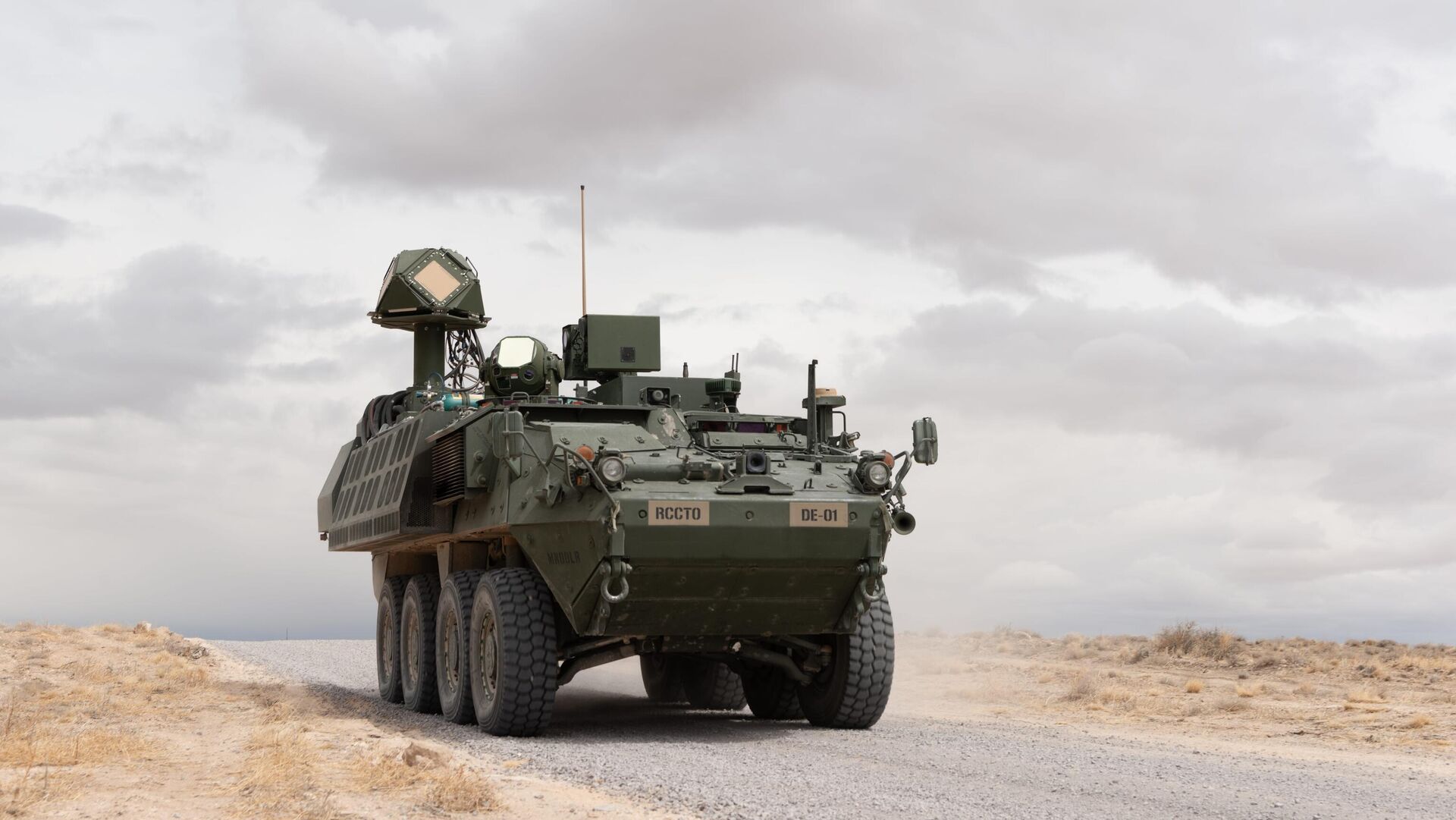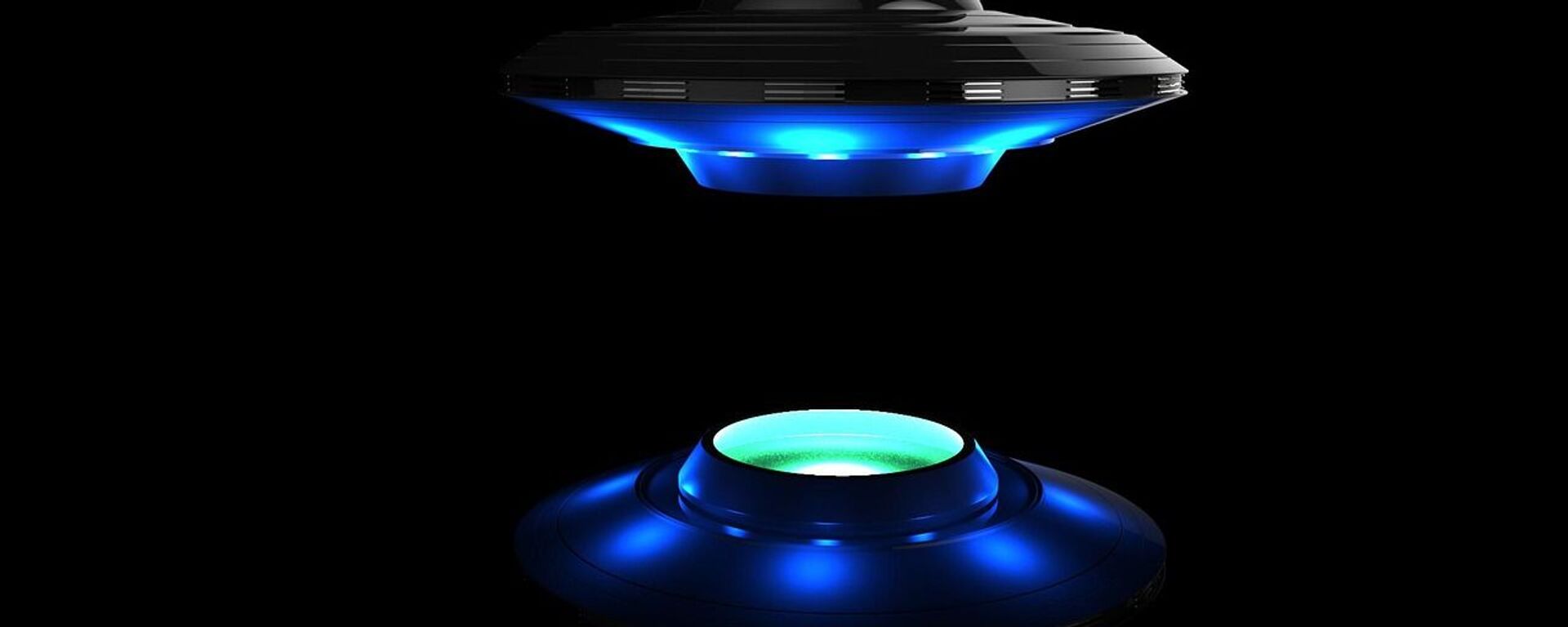https://sputnikglobe.com/20220519/raytheon-laser-weapon-on-stryker-vehicle-succeeds-at-shooting-down-incoming-mortar-shells-1095643990.html
Raytheon Laser Weapon on Stryker Vehicle Succeeds at Shooting Down Incoming Mortar Shells
Raytheon Laser Weapon on Stryker Vehicle Succeeds at Shooting Down Incoming Mortar Shells
Sputnik International
Since the 2019 attacks on two Saudi oil facilities by drones that evaded US air defenses, the Pentagon has concentrated heavily on developing new short-range... 19.05.2022, Sputnik International
2022-05-19T22:19+0000
2022-05-19T22:19+0000
2022-05-19T22:19+0000
laser
us army stryker
raytheon
us military
https://cdn1.img.sputnikglobe.com/img/07e6/05/13/1095643801_0:0:3068:1727_1920x0_80_0_0_fcfaef1e048d5bc547eec77e6dc76834.jpg
American defense contractor Raytheon announced recently that, in conjunction with engineering company KBR, it has developed a laser defense weapon that successfully downed incoming mortar rounds.The test took place at White Sands Missile Range in New Mexico and used a 50-kilowatt directed energy weapon mounted atop the ever-adaptable Stryker combat vehicle. Called the Directed Energy Maneuver-Short Range Air Defense (DE M-SHORAD), the system also demonstrated an ability to shoot down small, medium and large drones.According to the release, the system has been developed with the defense of “high-value military or civilian assets” in mind, mentioning not just bases and airports but also stadiums.The need to develop better short-range air defense (SHORAD) systems was driven home on September 14, 2019, when Houthi-piloted loitering munitions successfully evaded US Patriot air defense systems and struck two Saudi Aramco oil facilities at Abqaiq and Khourais. The Patriots are intended for shooting down ballistic missiles and aircraft, not small drones, and could not scan low enough on the horizon to target the incoming attackers.The Pentagon has also sponsored the development of a number of laser weapons on aircraft, warships and ground vehicles, with the intention of using them to shoot down enemy drones and missiles of various types. However, downing incoming mortars has remained the purview of the C-RAM system, a land-based adaptation of the Close-in Weapons System (CIWS) that provides point air defense on US Navy vessels. C-RAM knocks out mortars and missiles alike with a hail of exploding rounds.Other countries have developed similar systems, including Israel and Russia.
https://sputnikglobe.com/20220518/us-military-personnel-say-they-witnessed-flying-glowing-objects-over-sinai-years-ago-1095610080.html
Sputnik International
feedback@sputniknews.com
+74956456601
MIA „Rossiya Segodnya“
2022
Sputnik International
feedback@sputniknews.com
+74956456601
MIA „Rossiya Segodnya“
News
en_EN
Sputnik International
feedback@sputniknews.com
+74956456601
MIA „Rossiya Segodnya“
Sputnik International
feedback@sputniknews.com
+74956456601
MIA „Rossiya Segodnya“
laser, us army stryker, raytheon, us military
laser, us army stryker, raytheon, us military
Raytheon Laser Weapon on Stryker Vehicle Succeeds at Shooting Down Incoming Mortar Shells
Since the 2019 attacks on two Saudi oil facilities by drones that evaded US air defenses, the Pentagon has concentrated heavily on developing new short-range anti-air systems. A parallel effort has aimed to ramp up laser power from targeting aid and “dazzlers” to a real directed-energy weapon.
American defense contractor Raytheon announced recently that, in conjunction with engineering company KBR, it has developed a laser defense weapon that successfully downed incoming mortar rounds.
The test took place at White Sands Missile Range in New Mexico and used a 50-kilowatt directed energy weapon mounted atop the ever-adaptable Stryker combat vehicle. Called the Directed Energy Maneuver-Short Range Air Defense (DE M-SHORAD), the system also demonstrated an ability to shoot down small, medium and large drones.
"Soldiers in the field face increasingly complex threats, and our combat-proven sensors, software, and lasers are ready to give them a new level of protection," Annabel Flores, president of Electronic Warfare Systems for Raytheon Intelligence & Space, said in a news release. "The Army gave us our toughest challenge yet - countering rockets, artillery and mortars - and we took an essential step on the path to providing the maneuverable, short-range air defense Soldiers need."
According to the release, the system has been developed with the defense of “high-value military or civilian assets” in mind, mentioning not just bases and airports but also stadiums.
The need to develop better short-range air defense (SHORAD) systems was driven home on September 14, 2019, when Houthi-piloted loitering munitions successfully evaded US Patriot air defense systems and
struck two Saudi Aramco oil facilities at Abqaiq and Khourais. The Patriots are intended for shooting down ballistic missiles and aircraft, not small drones, and could not scan low enough on the horizon to target the incoming attackers.
The Stryker, a family of eight-wheeled vehicles derived from General Dynamics’ Canadian LAV III system, has become the basis for some of these systems, including the
M-SHORAD sent to Europe last year.
The Pentagon has also sponsored the development of a
number of laser weapons on aircraft, warships and ground vehicles, with the intention of using them to shoot down enemy drones and missiles of various types. However, downing incoming mortars has remained the purview of the C-RAM system, a land-based adaptation of the Close-in Weapons System (CIWS) that provides point air defense
on US Navy vessels. C-RAM knocks out mortars and missiles alike with
a hail of exploding rounds.
Other countries have
developed similar systems, including Israel and Russia.


